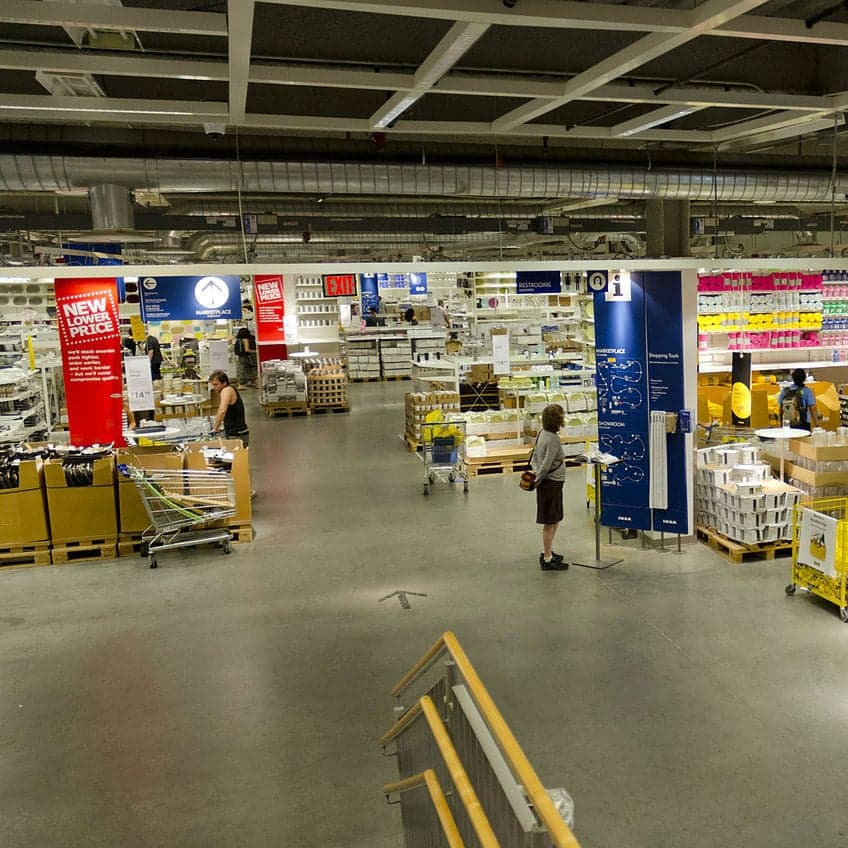Microwavable TV dinner trays, notebooks, tissues, packages, and newspapers are all derived from one of the world’s most used products—paper. According to Green America, “40 percent of the world’s industrial logging goes into making paper, and is expected to reach 50 percent in the near future.” Furthermore, the global consumption of paper has skyrocketed 400 percent in the last four decades, and in the last 20 years alone, the use of paper products has gone up from 92 million tons to 407 million tons in 2014. The worldwide paper industry is the fifth largest consumer of energy and is credited for four percent of the entire population’s energy use.
globalEDGE Blog Archive February 2018
Publish Date:
There is no doubt that sports never fail to bring the world together. It provides a platform for national unity and city pride. Hosting international sports events such as the Olympics, Fifa World Cup, or the Super Bowl is the reason for a significant amount of economic development in countries. However, these economic developments can be beneficial but also very costly for host countries.
Publish Date:
Venezuela is in the midst of a political and economic disaster and has faced hyperinflation, an increasingly worthless physical currency, and heightening food and medicine shortages. Recently, Venezuela has turned to blockchain, and the cryptocurrency boom as a potential method to fund its debt and develop a stable currency. The Petro and Petro Gold have the potential to replace the bolivar, which was the countries primary currency in the past.
Publish Date:
This is the fifth post in a five-part blog series focused on the consumer products industry.
Between 2002 and 2012, Latin America experienced impressive growth of its middle class as the incomes of the poor were rising at a faster rate than the incomes of the rich. Many consumer-packaged-goods (CPG) companies leveraged this progress as an opportunity to expand their products into Latin American markets and capitalize the middle class as a new customer base. However, the growth rates of poor incomes significantly slowed down after this “Golden Decade” due to economic crises and depression. The incomes of the rich continued to climb even higher, leading Latin America to be the most unequal region in the world. While the middle-class has expanded, it is certainly not thriving and has had relatively low purchasing power. This is why Latin Americans are focused more on saving and spending wisely, and the region's consumption trends highlight that people purchase CPGs heavily based on their perception of the product’s value.
Publish Date:
This is the fourth post in a five-part blog series focused on the consumer products industry.
The European consumer goods industry is in the process of a drastic transformation that could leave the industry looking unrecognizable in the next decade. A variety of forces are driving these developments, including market demographics, changing consumer preferences, new technology, and a changing regulatory landscape.
Publish Date:
This is the third post in a five-part blog series focused on the consumer products industry.
Companies in the consumer goods sector that are trying to expand may want to start looking to Asia. If a company successfully gains recognition in Asia it could mean a huge amount of profits, however, this is an extremely difficult market for foreign companies to penetrate. Because this region is experiencing income and economic growth, the people are able to do more and more discretionary spending. In Asia’s emerging economies, there is about $4 trillion in new spending and as the millennial generation gains income, there are many new first time spenders.
Publish Date:
This is the second post in a five-part blog series focused on the consumer products industry.
Adaptability, innovation, and differentiation are three important qualities consumer product (CP) companies must uphold in order to be successful in the ever-changing global market. The North American market upholds these ideas well through adapting technological improvements and having a good feel for the market climate. In turn with these abilities, the countries also work well with meeting the demands of their consumers, working through consolidating markets and executing strategies proficiently.
Publish Date:
This is the first post in a five-part blog series focused on the consumer products industry.
This month’s blog series will provide an overview of the consumer product industry and its future outlook, and then we will analyze the industry by region: North America, South America, Asia, and Europe. By the end of this week, these blogs will offer you a thorough summary of what’s happening in the consumer product industry and emphasize the importance of the industry in the global market.
Publish Date:
We’ve been hearing the words “Cultural Intelligence” everywhere we go lately. So what is cultural intelligence and why is it so important to global businesses?
Cultural intelligence is the ability for people, organizations, and businesses to relate to culturally diverse situations and work effectively in them. It is a vital aspect to international businesses because every country they are based in requires a different cultural approach and the ability to get well with the consumers you are working with. Global collaboration has become a significant aspect for the success of businesses and this cannot occur if businesses do not have the resources, knowledge, and talents of cultural IQ.
Publish Date:
MSU-CIBER and globalEDGE are excited to be part of the upcoming CCID conference in Scottsdale, Arizona. Through our Department of Education Title VIB grant, MSU-CIBER engages deeply in community college internationalization with a number of organizations, including CCID.
Publish Date:
Chewing-gum—from the baseball diamond to office workplaces, over 100,000 tons of gum is chewed per year around the world. Dating back to ancient times, different versions of gum have been used as a means of trade in Africa, stress relievers in Greece, and a construction material in Central America. To this day, chewing-gum continuous to hold its position as a popular commodity on our planet.
Publish Date:
2018 could be a very important year for the Chinese economy, with retail sales expected to exceed those of the United States this year. In the past, China’s economy has been largely supported by its manufacturing businesses, but now, there is a decline in manufacturing and an increase consumer spending and importing. Considering that China is the largest export economy for approximately 40 countries today, by the year 2030, many more countries may be relying on exporting to China. This includes the United States, who currently purchase almost 20% of China’s total exports. In fact, China currently buys over 20% of total sales from major companies such as Apple, Boeing, and General Motors. Many imports to China are coming from the United States, including approximately one out of every five cars sold in China. One factor that has contributed to the increased spending by Chinese consumers is the fact that there have been increases in their incomes.
Publish Date:
In the midst of an economic transformation that favors technology, the trucking industry is seeing one of its largest growth years in the past decade. In January, American trucking companies ordered the largest number of new 18-wheelers in about 12 years. This action took place following a tax overhaul that gave them more cash to invest. Trucking companies have also been incentivized to purchase new fuel-efficient trucks in a period of rising diesel costs. In a way, a digital economy has the potential to boost the growth of the trucking industry even further. Heightened packaging volumes have allowed suppliers to employ more truckers, which has boosted margins through their economies of scale. On top of this, more individuals are partaking in e-commerce, which has pressured the shipping industry to have the capability to access customers in rural areas as well as suburban and urban areas.
Publish Date:
At the current rates of progress towards closing the gender gap around the world, it would take Western Europe 61 years to close their gender gap, Eastern Europe and Central Asia 128, the Middle East and North Africa 157, East Asia and the Pacific 161, and North America 168 years. Some of the world’s largest economies are the farthest away from gender parity. At a time when countries have closed an average of 85% of their gaps in educational attainment, one may wonder why progress towards gender parity has slowed down. The answer is rooted in cultures that are unique to every country, but more prominently in gender-based stereotypes that are common across nations and hurt not only industries but entire economies.
Publish Date:
Global equity markets have taken investors on a roller coaster ride this past week. After reaching new all-time highs in late January, investors were expecting the steady gains they have grown accustomed to over the past year to continue. Markets began to take a turn last Friday, seemingly spurred by a better than expected U.S. jobs report. Investors were on edge that increased employment could create inflationary pressure causing central banks to hike interest rates. Friday’s losses continued into Monday with the Dow Jones Industrial Average recording its largest ever points decline and biggest percentage loss in nearly seven years. When the dust began to settle Monday after hours, the US-based blue-chip index lost 7% in two days.
Publish Date:
Most people have a basic knowledge of the types of makeup individual’s use such as lipstick, eyeshadow and bronzer. However, in the past decade, more and more options have been arising for all aspects of enhancing one's natural beauty. Beauty blenders, highlighter, lip plumping kits are just a few of new additions to the makeup industry. Additionally, over the last 14 years, the cosmetic industry has been experiencing a consistent growth as a whole of about four percent annually. In May of 2017, the beauty industry was valued at about $445 billion creating an affluent industry for individuals, mainly women, who want to have big success in a self-starting industry.
Doug Barry, Conover + Gould Strategy Group
Publish Date:
A Hope in the Hollers
Trade and trade agreements are blamed by many people for a decline in good paying jobs, wage stagnation, and other ills. There’s a widespread belief that globalization and its corporate and multinational organization enablers have handed right-wing nativist groups a club with which to bash free market liberalism, a philosophy that has prevailed since the end of the World War II.
Publish Date:
What does full employment really mean? Full employment in an economic point of view does not necessarily mean everyone has a job. If employment drops beyond a certain point, it can generate price and wage pressures, which might spark an inflation. Therefore, economists refer to the term as the sweet spot, where employment is close to full and does not push prices up.
Publish Date:
This is the fifth post in a five-part blog series focused on the energy industry.
The future of energy is often discussed in the news. Many publications will say that the energy market’s future rests in one form or another but the future of the energy industry whole is difficult to predict because much of the future of energy is rooted in the policies of politicians. However, the Earth is not yet close to running out of these nonrenewable fuels so while there will be a need to fully replace the use of fossil fuels in our world at some point; running out of fossil fuels is not really the most pressing need at this time.
Publish Date:
This is the fourth post in a five-part blog series focused on the energy industry.
As more countries consider the environmental impacts of capturing and using different forms of energy, the era for previous power-houses like coal is coming to a close. This post will explore the accessibility, development, and trading of upcoming fossil fuels around the globe.






















